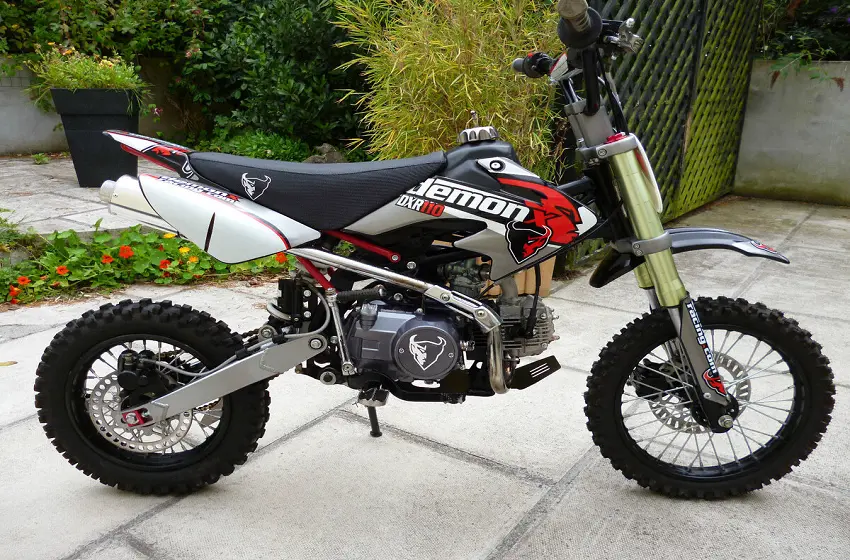In the world of motorcycles, there’s a pint-sized contender that’s been making big waves. Pit bikes, once relegated to the sidelines of racing events, have burst onto the scene as full-fledged stars in their own right.
These compact powerhouses have captured the hearts of riders young and old, offering a unique blend of accessibility, affordability, and pure, unadulterated fun. Let’s dive into the fascinating world of pit bikes and discover why they might just be your next two-wheeled obsession.
What’s a Pit Bike, Anyway?
Pit bikes started life as humble utility vehicles, used by mechanics to zip around the pits at motorcycle races. These miniature motorcycles were perfect for navigating cramped spaces and making quick trips back and forth to the truck. But it didn’t take long for riders to realize that these little bikes had potential far beyond their original purpose.
Today, a pit bike typically refers to a small-displacement motorcycle, usually ranging from 50cc to 190cc. They’re characterized by their compact frames, small wheels (usually 10-14 inches), and surprisingly capable engines. While they share some DNA with dirt bikes, pit bikes are a unique breed all their own.
The term “pit bike” originally came from their use in the pit areas of racetracks. Mechanics and team members would use these small bikes to quickly move around the crowded pit areas during races. Over time, the term evolved to encompass a wider range of small, off-road motorcycles designed for both utility and recreation.
“Pit bikes are the gateway drug of the motorcycle world. Once you start, you can’t stop!” – Jake Smith, 3-time Pit Bike National Champion
This quote from Jake Smith encapsulates the addictive nature of pit bikes. Their accessibility and the sheer fun factor make them irresistible to many riders, often leading to a lifelong passion for two-wheeled adventures.
The Evolution: From Paddock to Passion
The journey of pit bikes from utility vehicles to beloved racing machines is a testament to the ingenuity and passion of motorcyclists. As riders began to see the potential in these tiny bikes, they started modifying them for performance and fun. This grassroots movement quickly gained traction, leading to the development of purpose-built pit bikes designed specifically for racing and recreational use.
Key milestones in pit bike evolution:
- Late 1990s: Pit bikes gain popularity as fun pit transportation
- Early 2000s: First organized pit bike races emerge
- Mid 2000s: Manufacturers begin producing specialized pit bikes
- 2010s: Pit bike racing series gain national attention
- Present day: Pit bikes diversify into various disciplines (motocross, supermoto, freestyle)
The evolution of pit bikes is a classic example of how motorsports innovation often starts at the grassroots level. What began as a practical solution for pit crews quickly transformed into a thrilling new category of motorcycle racing and recreation.
In the late 1990s, pit bikes were primarily stock Honda Z50s or similar models. These small, air-cooled four-stroke bikes were reliable and easy to maintain, making them ideal for pit use. However, it wasn’t long before riders started to see their potential for fun beyond the paddock.
The early 2000s saw the emergence of the first organized pit bike races. These events were often informal affairs, held after hours at motocross tracks or in parking lots. The low-stakes, high-fun nature of these races quickly caught on, attracting riders of all ages and skill levels.
As the popularity of pit bike racing grew, manufacturers took notice. By the mid-2000s, companies like SSR, Thumpstar, and Piranha began producing purpose-built pit bikes. These machines featured upgraded components like inverted forks, disc brakes, and more powerful engines, elevating the performance capabilities of pit bikes.
The 2010s marked a turning point for pit bike racing, with the establishment of national-level racing series. Events like the Pit Bike National Championship and the Amateur National Pit Bike Championship brought legitimacy and structure to the sport, providing a platform for talented riders to showcase their skills.
Today, pit bikes have diversified into various disciplines, mirroring the broader motorcycle world. From motocross-style racing to super moto and even freestyle competitions, pit bikes have proven their versatility and staying power in the motorsports landscape.
The Nitty-Gritty: Anatomy of a Pit Bike
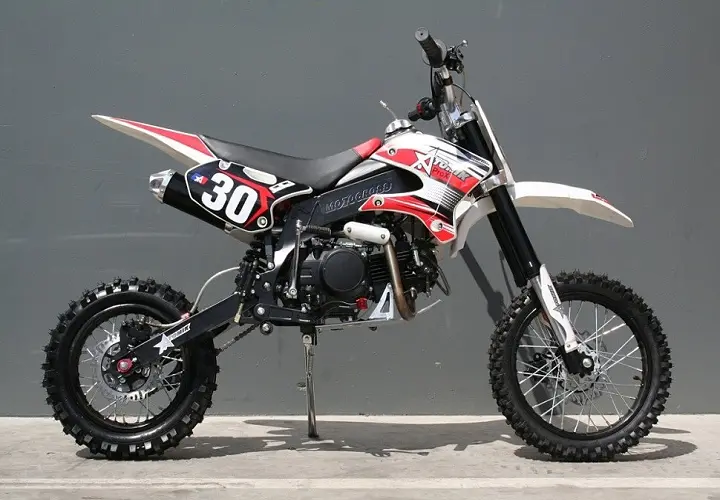
To truly appreciate pit bikes, you need to understand what makes them tick. Let’s break down the key components that give these mini motorcycles their unique character.
Engine Types: 2-Stroke vs. 4-Stroke Showdown
Pit bikes come in both 2-stroke and 4-stroke varieties, each with its own pros and cons:
2-Stroke Engines:
- Pros:
- Lighter weight
- More power for their size
- Simpler design, easier to work on
- Cons:
- Higher maintenance requirements
- Less fuel efficient
- Noisier operation
4-Stroke Engines:
- Pros:
- Smoother power delivery
- Better fuel efficiency
- Longer engine life
- Cons:
- Heavier than 2-strokes
- More complex design
- Generally less power per cc
The choice between 2-stroke and 4-stroke engines often comes down to personal preference and intended use. 2-stroke pit bikes are favored by many racers for their explosive power and lightweight design. The simplicity of the 2-stroke engine also makes them easier to work on, which is a big plus for DIY mechanics.
On the other hand, 4-stroke pit bikes have gained popularity in recent years due to their smoother power delivery and increased reliability. They’re often preferred for recreational riding and by beginners who appreciate the more predictable power characteristics.
Size Matters: Frame and Wheel Specs
Pit bikes are defined by their compact dimensions. Here’s a typical pit bike size breakdown:
| Component | Typical Range |
| Wheelbase | 36-45 inches |
| Seat Height | 24-30 inches |
| Wheel Size | 10-14 inches |
| Total Weight | 110-160 lbs |
These small dimensions make pit bikes incredibly agile and easy to maneuver, even in tight spaces. The low seat height also means most riders can easily touch the ground, boosting confidence for beginners.
The compact size of pit bikes is one of their defining features. The short wheelbase (typically 36-45 inches) contributes to their nimble handling characteristics, allowing riders to navigate tight turns and technical sections with ease. This agility is further enhanced by the small wheel sizes, which usually range from 10 to 14 inches in diameter.
Seat height is another crucial factor in pit bike design. With most pit bikes featuring seat heights between 24 and 30 inches, they’re accessible to riders of various sizes and skill levels. This low seat height allows riders to plant their feet firmly on the ground when stopped, which is particularly beneficial for younger or shorter riders who might find full-size dirt bikes intimidating.
The lightweight nature of pit bikes is another key advantage. Typically weighing between 110 and 160 pounds, these machines are easy to maneuver both on and off the track. The light weight also contributes to their responsiveness and makes them easier to transport, often fitting in the back of a car or small trailer.
Suspension Secrets: Making the Most of Minimal Travel
Despite their small size, many pit bikes feature surprisingly capable suspension systems. While they can’t match the plush ride of a full-size dirt bike, modern pit bikes often come equipped with:
- Inverted front forks with 4-6 inches of travel
- Rear mono shock with 4-5 inches of travel
- Adjustable preload and sometimes compression/rebound damping
This suspension setup allows pit bikes to tackle jumps, bumps, and berms with surprising competence, making them a blast to ride on motocross-style tracks.
The suspension system on a pit bike plays a crucial role in its performance and ride quality. While the travel is limited compared to full-size dirt bikes, manufacturers have made significant strides in maximizing the effectiveness of pit bike suspension.
Inverted front forks, also known as upside-down forks, are now common on higher-end pit bikes. These forks offer improved rigidity and reduced unsprung weight compared to traditional right-side-up forks. With 4-6 inches of travel, they provide enough cushioning to absorb small bumps and jumps while maintaining stability in corners.
The rear suspension typically consists of a single shock absorber (monoshock) with 4-5 inches of travel. This setup offers a good balance between bump absorption and bottoming resistance. Many pit bikes feature adjustable preload on the rear shock, allowing riders to fine-tune the suspension for their weight and riding style.
More advanced pit bikes may offer additional suspension adjustments, such as compression and rebound damping. These features allow riders to dial in their suspension for specific track conditions or riding preferences, much like their full-size counterparts.
While pit bike suspension may seem minimal compared to larger off-road motorcycles, it’s important to remember that these bikes are much lighter and typically ridden at lower speeds. The suspension is designed to be effective within these parameters, providing a responsive and controlled ride that’s well-suited to the tight, technical nature of pit bike tracks.
Pit Bikes vs. The World
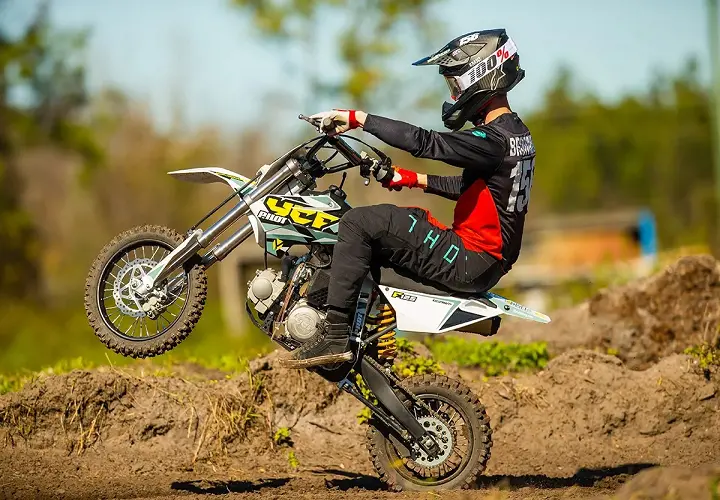
To truly understand the pit bike phenomenon, it’s helpful to compare them to their two-wheeled cousins.
How They Stack Up Against Dirt Bikes
While pit bikes share some DNA with traditional dirt bikes, there are some key differences:
Pit Bikes:
- Smaller and lighter
- Lower seat height
- Less powerful engines
- More affordable
- Easier to transport
Dirt Bikes:
- Larger frame and wheels
- Higher ground clearance
- More powerful engines
- Better for long-distance riding
- More suitable for professional racing
The comparison between pit bikes and full-size dirt bikes highlights the unique niche that pit bikes occupy in the off-road motorcycle world. While both are designed for off-road use, they cater to different needs and rider preferences.
Pit bikes excel in situations where space is limited and agility is key. Their small size and light weight make them ideal for tight, technical tracks or backyard riding areas. The lower seat height and less powerful engines make them more approachable for beginners or younger riders who might find full-size dirt bikes intimidating.
On the other hand, dirt bikes are better suited for more demanding off-road conditions. Their larger wheels and increased ground clearance allow them to tackle rougher terrain with ease. The more powerful engines provide better performance for high-speed riding and longer distances.
One of the biggest advantages of pit bikes is their affordability. Both the initial purchase price and ongoing maintenance costs are typically much lower than those of full-size dirt bikes. This makes pit bikes an attractive option for budget-conscious riders or those looking to get into off-road riding without breaking the bank.
Transportation is another area where pit bikes have an edge. Their compact size means they can often be transported in the back of a car or small trailer, eliminating the need for a truck or larger vehicle. This convenience factor makes it easier for riders to get out and ride more often.
The Mini Moto Connection
Pit bikes have a lot in common with mini moto racing bikes, which are purpose-built for small-scale road racing. Both emphasize compact size and agility, but mini motos are typically designed for paved surfaces, while pit bikes are more versatile for off-road use.
The relationship between pit bikes and mini motos is an interesting one, as both categories emerged from the desire to create scaled-down versions of full-size motorcycles. Mini motos, also known as pocket bikes, are essentially miniature sport bikes designed for racing on asphalt.
While pit bikes and mini motos share similarities in their compact size and emphasis on agility, there are some key differences:
- Intended use: Pit bikes are primarily designed for off-road use, while mini motos are built for paved surfaces.
- Wheel size: Mini motos typically have even smaller wheels than pit bikes, often around 6.5 inches in diameter.
- Riding position: Mini motos feature a more aggressive, tucked riding position similar to sport bikes, while pit bikes have a more upright, dirt bike-like posture.
- Engine types: Mini motos are almost exclusively powered by 2-stroke engines, while pit bikes come in both 2-stroke and 4-stroke varieties.
- Suspension: Pit bikes generally have more suspension travel to handle off-road terrain, while mini motos have stiffer, more road-oriented suspension.
Despite these differences, there’s often crossover between pit bike and mini moto communities. Many riders enjoy both disciplines, and some events feature classes for both types of bikes.
Pit Bikes in the Realm of Street-Legal Machines
Some pit bike models can be made street-legal with the addition of lights, mirrors, and proper documentation. However, their small size and limited power make them better suited for short trips and urban environments rather than highway use.
The concept of street-legal pit bikes opens up interesting possibilities for urban commuters and those looking for a unique around-town ride. While not all pit bikes can be easily converted for street use, some manufacturers offer models that are designed with street legality in mind.
To make a pit bike street-legal, several modifications are typically required:
- Lighting: Addition of headlights, taillights, and turn signals
- Mirrors: Installation of rearview mirrors
- Horn: A working horn is required for street use
- License plate: A mount and light for a license plate
- DOT-approved tires: Street-legal tires with proper tread patterns
- Speedometer: A functioning speedometer is required in most jurisdictions
- Emissions: In some areas, the bike may need to meet certain emissions standards
It’s important to note that street-legal requirements vary by location, so riders should always check their local laws before attempting to ride a pit bike on public roads.
While street-legal pit bikes can be a fun and economical option for short trips, they do have limitations. Their small engines and wheels are not well-suited for high-speed or long-distance riding on highways. Additionally, their low profile can make them less visible to other motorists, requiring extra caution when riding in traffic.
Despite these challenges, street-legal pit bikes have found a niche among urban dwellers looking for an easy-to-park, fuel-efficient mode of transportation. They’re particularly popular in congested cities where their small size allows them to navigate traffic and find parking more easily than larger motorcycles or cars.
Who’s Riding These Pocket Rockets?
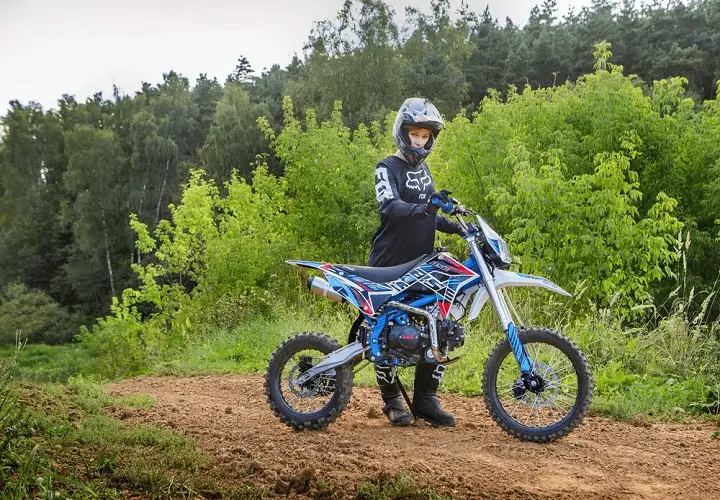
Pit bikes have found a diverse fan base, appealing to riders of all ages and skill levels.
Kids and Beginners: The Perfect Training Ground
For young riders and those new to motorcycling, pit bikes offer an ideal entry point:
- Low seat height builds confidence
- Lightweight and easy to handle
- Less intimidating than full-size bikes
- Affordable way to learn riding basics
Pit bikes play a crucial role in introducing new generations to the world of motorcycling. Their small size and manageable power make them less intimidating for kids and beginners, allowing new riders to build confidence and skills in a safer environment.
The low seat height of pit bikes is particularly beneficial for younger or shorter riders. Being able to plant both feet firmly on the ground when stopped provides a sense of security and control that’s crucial for building confidence. This feature also makes it easier for riders to catch themselves if they start to lose balance, reducing the risk of falls and injuries.
The lightweight nature of pit bikes contributes to their beginner-friendly characteristics. New riders can more easily maneuver these bikes at low speeds, learning important skills like balance, throttle control, and basic cornering techniques without being overwhelmed by the weight and power of a full-size motorcycle.
Many parents and riding instructors choose pit bikes as a starting point for young riders due to their affordability and ease of maintenance. The lower purchase price and operating costs make it more feasible for families to get involved in motorcycling, and the simpler mechanics of pit bikes provide an excellent opportunity for kids to learn basic maintenance skills.
Pros and Their Practice Regimens
Even professional motocross and supercross racers have embraced pit bikes as valuable training tools:
- Improve technical skills on a smaller scale
- Practice new tricks with less risk
- Maintain fitness and bike control during off-season
- Have fun without the pressure of big bike racing
It might seem surprising that professional riders, accustomed to powerful 250cc and 450cc race bikes, would find value in riding pit bikes. However, many top-level racers incorporate pit bike riding into their training regimens for several reasons.
Firstly, pit bikes allow pros to work on their technical skills in a lower-risk environment. The smaller size and reduced power of pit bikes mean that mistakes are generally less consequential, allowing riders to push their limits and try new techniques without the same level of danger associated with full-size bikes.
Pit bikes are excellent for honing cornering skills. The tight turning radius and responsive handling of pit bikes force riders to be precise with their body positioning and throttle control. These skills translate directly to full-size bike racing, particularly in tight indoor supercross-style tracks.
Many professional riders use pit bikes for cross-training and maintaining fitness during the off-season. The physical demands of wrestling a small, agile bike around a track provide an excellent workout that complements other training methods.
Perhaps most importantly, pit bikes offer a way for pros to reconnect with the pure joy of riding. Without the pressures of competition and sponsorship obligations, riding pit bikes allows professional racers to rediscover the fun that drew them to the sport in the first place.
Weekend Warriors and Backyard Bandits
For many adults, pit bikes offer a way to recapture the joy of riding without the commitment of a full-size motorcycle:
- Easy to store and transport
- Affordable to buy and maintain
- Great for backyard tracks and small spaces
- Low-stakes fun that doesn’t require a huge time investment
The Pit Bike Scene: More Than Just Racing
While racing is a big part of the pit bike world, these versatile machines have spawned a diverse and vibrant culture.
Competitive Landscapes: From Local Throwdowns to National Series
Pit bike racing has grown from informal backyard competitions to organized national events. Some popular racing formats include:
- Motocross-style tracks
- Supercross-inspired indoor arenas
- Flat track oval racing
- Enduro and woods racing
Major pit bike racing series, like the Pit Bike National Championship, attract riders from across the country and offer serious competition for those looking to test their skills.
Freestyle and Stunt Riding: Defying Gravity on a Budget
The compact size and lightweight nature of pit bikes make them ideal for freestyle tricks and stunts. Riders push the limits of what’s possible on these small machines, performing:
- Backflips and front flips
- Whips and scrubs
- Hand plant variations
- Complex technical combos
Pit Bike Culture: The Tight-Knit Community of Small Bike Enthusiasts
Beyond the racing and tricks, pit bikes have fostered a unique and passionate community. This culture is characterized by:
- DIY ethos and garage engineering
- Shared knowledge and tips
- Inclusive atmosphere welcoming riders of all ages and backgrounds
- Emphasis on fun over serious competition
Customization Nation: Making Your Pit Bike Sing
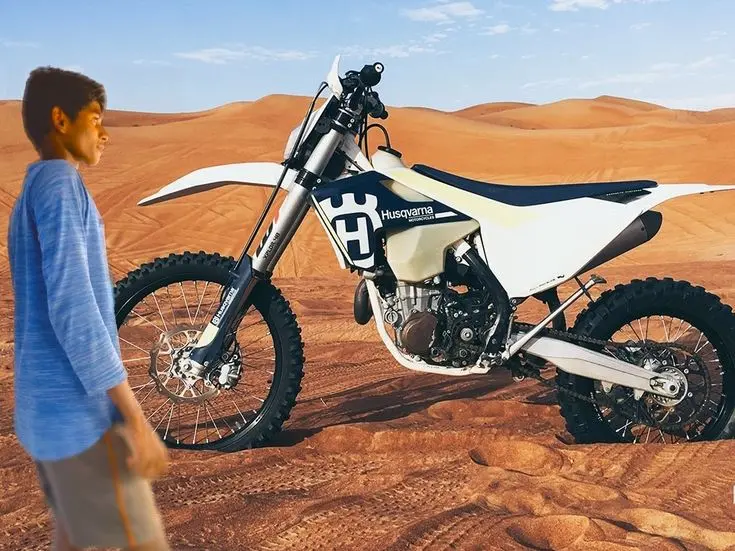
One of the most appealing aspects of pit bikes is the ability to customize and upgrade them to suit your riding style and preferences.
Performance Upgrades: Squeezing Every Ounce of Power
Popular performance mods include:
- Big bore kits to increase engine displacement
- High-flow air filters and exhaust systems
- Aftermarket carburetors or fuel injection systems
- Upgraded camshafts and valve springs
- Performance clutches and gearing changes
Aesthetic Mods: Standing Out in the Paddock
Pit bike owners love to personalize their rides with:
- Custom graphics kits
- Anodized bling kits (bolts, levers, etc.)
- Aftermarket seats and plastics
- LED lighting upgrades
- Unique wheel and tire combinations
DIY Maintenance: Keeping Your Pocket Rocket Running Right
The simplicity of pit bikes makes them ideal for home mechanics. Essential maintenance tasks include:
- Regular oil changes
- Air filter cleaning and replacement
- Chain adjustment and lubrication
- Valve clearance checks
- Spark plug replacement
The Price of Fun: Pit Bike Economics
One of the biggest draws of pit bikes is their affordability compared to full-size motorcycles.
New vs. Used: Navigating the Market
New Pit Bikes:
- Price range: $500 – $3000+
- Pros: Warranty, latest technology, no hidden issues
- Cons: Higher initial cost, depreciation
Used Pit Bikes:
- Price range: $200 – $2000+
- Pros: Lower cost, potential for good deals
- Cons: Possible hidden issues, may need repairs
Hidden Costs: Gear, Maintenance, and Race Fees
While pit bikes are relatively affordable, there are additional costs to consider:
- Safety gear (helmet, boots, gloves, etc.): $200 – $1000+
- Regular maintenance supplies: $50 – $200 per year
- Race entry fees: $20 – $100 per event
- Transportation (if you don’t have a truck or van): Trailer rental or purchase
Return on Investment: The Value of Smiles Per Gallon
Despite the costs, many pit bike enthusiasts find the investment well worth it:
- Affordable entry into motorcycling
- Countless hours of entertainment
- Opportunity to learn mechanical skills
- Potential for family bonding and shared experiences
Safety First: Riding Responsibly
While pit bikes are tons of fun, it’s crucial to prioritize safety to ensure everyone has a good time.
Essential Gear for Pit Bike Warriors
Don’t skimp on safety equipment. Always wear:
- DOT-approved helmet
- Goggles or face shield
- Long-sleeved jersey and pants
- Gloves
- Over-the-ankle boots
- Knee and elbow pads (optional but recommended)
Training Tips for Newbies and Vets Alike
- Start slow and build skills progressively
- Practice proper body position and weight distribution
- Learn to use both brakes effectively
- Master clutch control for smooth starts and turns
- Always ride within your limits and the limits of your bike
Legal Considerations: Where Can You Actually Ride These Things?
Pit bikes aren’t typically street-legal, so it’s important to know where you can ride:
- Private property (with owner’s permission)
- Designated off-road riding areas
- Motocross tracks (check if pit bikes are allowed)
- Indoor training facilities
Always check local laws and regulations before riding in any new area.
The Future of Pit Bikes
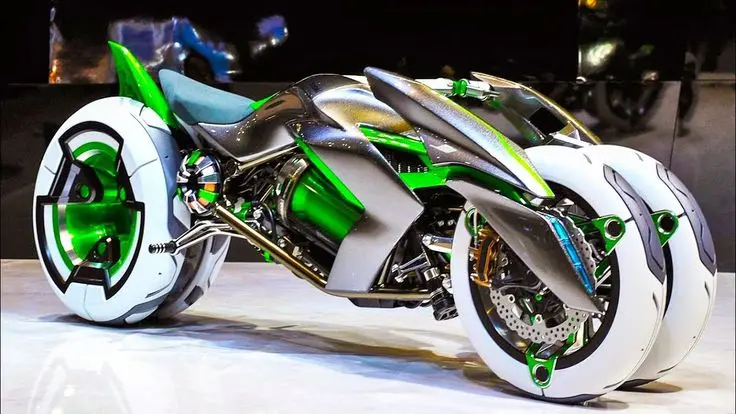
The pit bike scene continues to evolve, with exciting developments on the horizon.
Electric Revolution: Battery-Powered Pit Bikes on the Horizon
Electric pit bikes are gaining traction, offering:
- Instant torque for quick acceleration
- Quieter operation (great for noise-sensitive areas)
- Lower maintenance requirements
- Zero emissions for environmentally conscious riders
Growing Popularity and Mainstream Acceptance
As pit bikes continue to gain exposure through social media and organized events, we can expect to see:
- More dedicated pit bike tracks and facilities
- Increased sponsorship opportunities for talented riders
- Greater variety of pit bike models from major manufacturers
Innovations in Design and Technology
The future of pit bikes looks bright, with potential advancements like:
- Advanced traction control systems
- Lightweight, high-strength materials for improved performance
- Adjustable power modes for different skill levels
- Integration with smartphone apps for performance tracking
Why Pit Bikes Might Just Be Your Next Obsession
After exploring the world of pit bikes, it’s easy to see why these miniature motorcycles have captured the hearts of so many riders.
The Unbeatable Fun Factor
There’s something inherently joyful about riding a pit bike. The combination of low stakes and high excitement creates an experience that’s hard to match.
Accessibility and Affordability
Pit bikes offer an entry point into motorcycling that’s attainable for almost anyone. Whether you’re 8 or 80, there’s a pit bike out there that’s right for you.
A Gateway to a Lifelong Passion for Two Wheels
For many riders, pit bikes are just the beginning. The skills and confidence gained on these small machines can translate to a lifetime of motorcycling adventures.
In conclusion, pit bikes have come a long way from their humble beginnings in the race paddock. Today, they represent a thriving subculture within the motorcycling world, offering a unique blend of affordability, accessibility, and pure, unadulterated fun.
Whether you’re looking to get into motorcycling for the first time, want to improve your skills as an experienced rider, or simply want to recapture the joy of riding, a pit bike might just be the perfect addition to your garage.
So why not give one a try? You might find yourself joining the ranks of pit bike enthusiasts who’ve discovered that sometimes, the biggest thrills come in the smallest packages.

With over 9 years of dedicated experience in the automotive industry, I am passionate about all things automotive. My journey began with a deep curiosity for automobiles, which led me to delve deeper into their mechanics, technology and trends. My expertise spans various aspects of the automotive world, from the latest electric vehicles to classic car restoration techniques. Through my articles, I aim to share my knowledge and insights, helping readers stay informed and inspired in the fast-paced world of the automobile.
